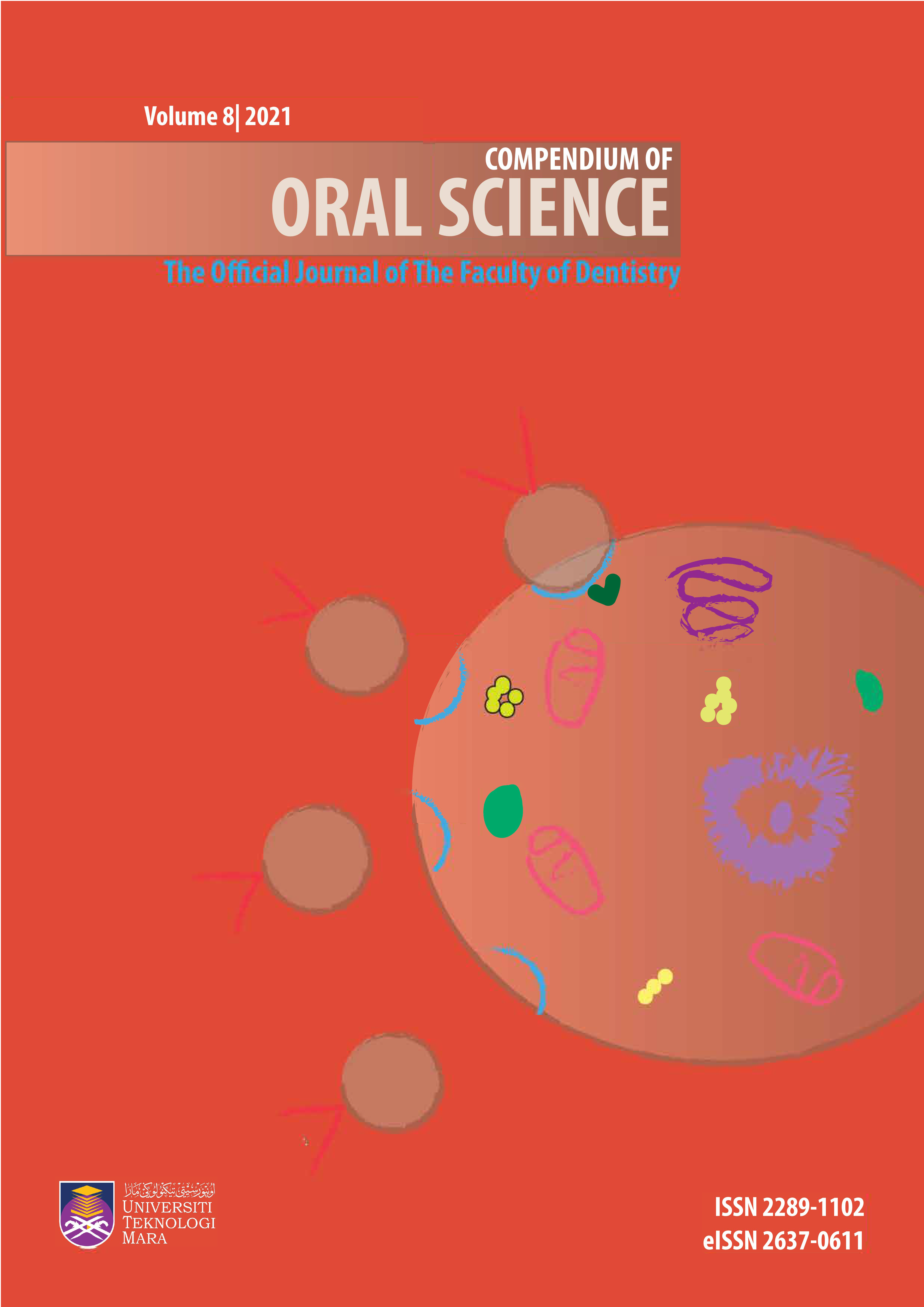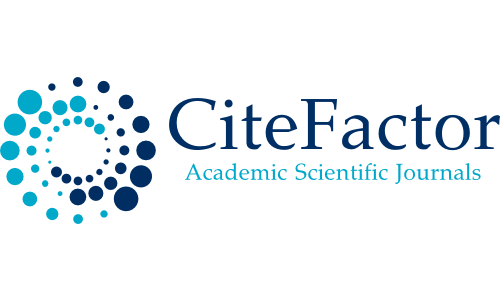Characteristics and Association of Gender to Dental and Occlusal Anomalies in Malaysian Primary School Children
DOI:
https://doi.org/10.24191/cos.v8i0.17485Keywords:
dental anomalies, malocclusion, mixed dentition, crowding, overjet, overbiteAbstract
Aim: To describe the distribution and association of dental and occlusal anomalies to gender in children of mixed and early permanent dentition. Methods: It is a cross-sectional study with stratified random sampling based on the main ethnic composition involving 413 subjects aged between 9 and 11 years old enrolled in 7 national primary schools in Sungai Buloh, Selangor. A calibrated operator carried out clinical examinations, and study models were fabricated. All dental and occlusal anomalies were recorded accordingly and were analysed using SPSS version 21.0. Pearson chi-square test was used to determine the gender-based differences for various parameters. Results: The reported dental anomalies were supernumeraries and clinically missing teeth (impacted or hypodontia) with a prevalence of 1.5% and 6.3%, respectively. The occlusal abnormalities were: crowding (54.0%), sagittal discrepancies (overjet; increased, reduced, and reversed overjet: 55.5%), vertical discrepancies (overbite; increased, reduced, and open bite: 37.5%) and transverse discrepancies (unilateral and bilateral posterior crossbite: 5.1%). Gender-based differences were not statistically significant to all reported dental and occlusal anomalies (p>0.05). Conclusions: Children in the mixed and early permanent dentition showed various dental and occlusal anomalies with crowding being the highest anomaly. Gender was not associated with any type of dental or occlusal characteristics in the studied population.Downloads
Published
How to Cite
Issue
Section
License
Copyright (c) 2024 Compendium of Oral Science

This work is licensed under a Creative Commons Attribution-NonCommercial 4.0 International License.
Materials contained in the journal may be reproduced for educational purposes provided that both the author(s) and the journal are appropriately recognised; otherwise duplication is not permitted. No articles, reports, or portions there of may be translated into other languages, published in books, journals, magazines, or any other print form without written permission from the authors and from the journal.
Disclaimer: The statements, opinions and data expressed in the articles and reports herein are those of the author(s) and not of the publisher and the editor(s). The publisher and the editor(s) disclaim responsibility for any injury to persons or property resulting from any schemes, methods, instructions or ideas referred to in the content.















